

James Wong
5 Days Ago
The Volkswagen Tiguan R was more popular in Australia than anywhere else in the world in 2023 – and it's not hard to see why...
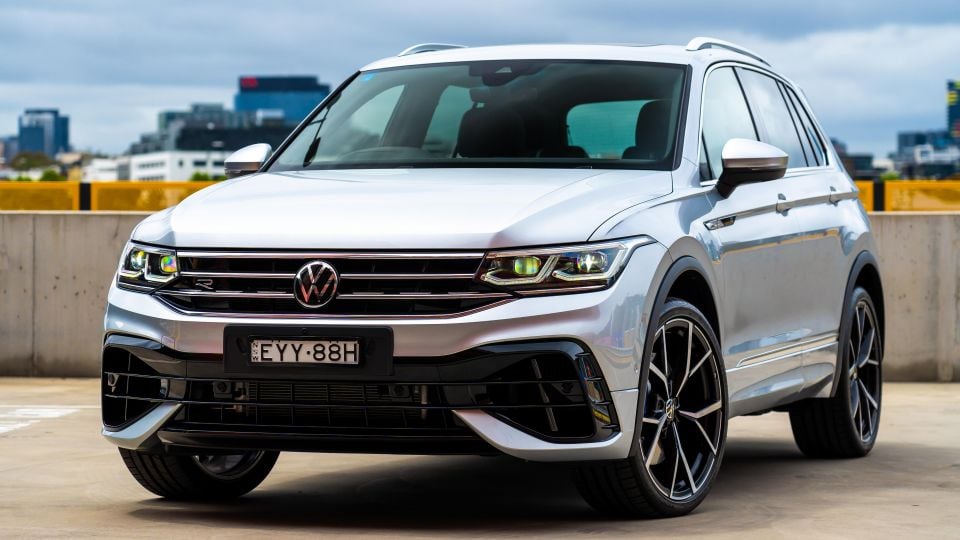


Quickly see how this car stacks up against its competition. Select any benchmark to see more details.
Take advantage of Australia's BIGGEST new car website to find a great deal on a Volkswagen Tiguan.
Australia, you bought more Volkswagen Tiguan Rs than anywhere else in the world last year. That’s huge.

Some 2227 units of Volkswagen’s hotted-up family SUV were delivered Down Under in 2023, making it the best-selling vehicle in the German brand’s R performance range, and making Australia the biggest market globally for this model.
It was a similar story for the smaller T-Roc R which returned an impressive 1846 deliveries for the year. Clearly, Volkswagen’s hottest SUVs have found favour with performance-hungry Australian new car buyers.
While there’s a new generation of VW’s mid-size SUV on the way, the 2024 Volkswagen Tiguan R remains on sale for the time being, with no direct successor revealed as yet. Volkswagen Australia says deliveries of the Tiguan R will continue into the third quarter of 2024.
The Tiguan R remains a pretty unique proposition in market, being a mainstream-branded high-performance SUV that properly undercuts more premium competition by a substantial margin.
Similar performance from an Audi Q3 (RSQ3), BMW X1 or a Mercedes-AMG GLA will cost you around $30,000 more than the VW, and the Tiguan R is arguably more practical than all three despite its shared DNA with the Audi.
Does it deserve to be such a strong seller? Read on to find out.
Pricing for the Tiguan R has risen by $2600 for the 2024 model year, now listing for $73,790 plus on-road costs.

2024 Volkswagen Tiguan pricing:
Prices exclude on-road costs
To see how the Volkswagen Tiguan shapes up against its rivals, use our comparison tool.
While the Tiguan R is pretty distinguishable from the standard models from the outside – especially in the available Lapiz Blue hero paint – the interior differences are far more subtle.
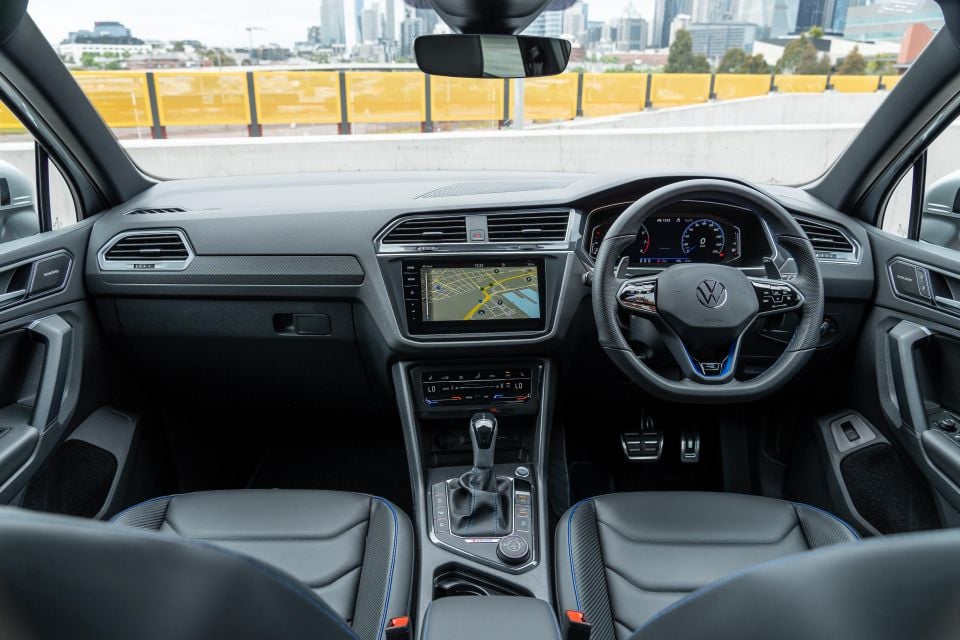
If not for the splashes of blue highlights, there’s not much different in here compared to the cabin of a Tiguan R-Line. Whether that’s a good or bad thing is up to you.
There’s Nappa leather sports seats up front with more bolstering than you’ll find in a normal Tiguan’s comfort seats, which also feature a racy carbon-effect accent on the upper bolsters. The blue piping and top-stitching are also nice touches, and remind you that you’re in the flagship.
Ahead of the driver is a chunky sports leather steering wheel with perforated sections at 3 and 9 o’clock, with blue accents and stitching to match the other trims in the cabin. While the fat rim is nice to hold and the enlarged paddle shifters are more sporty than other models, the touch-capacitive controls are fiddly and at times innaccurate.
If you’re driving hard you may find yourself accidentally adjusting the volume or turning on the heated steering wheel function due to the placement of the switchgear. This is something Volkswagen is fixing with new models, due to customer and media feedback, so the next Tiguan won’t feature this annoying steering wheel design.
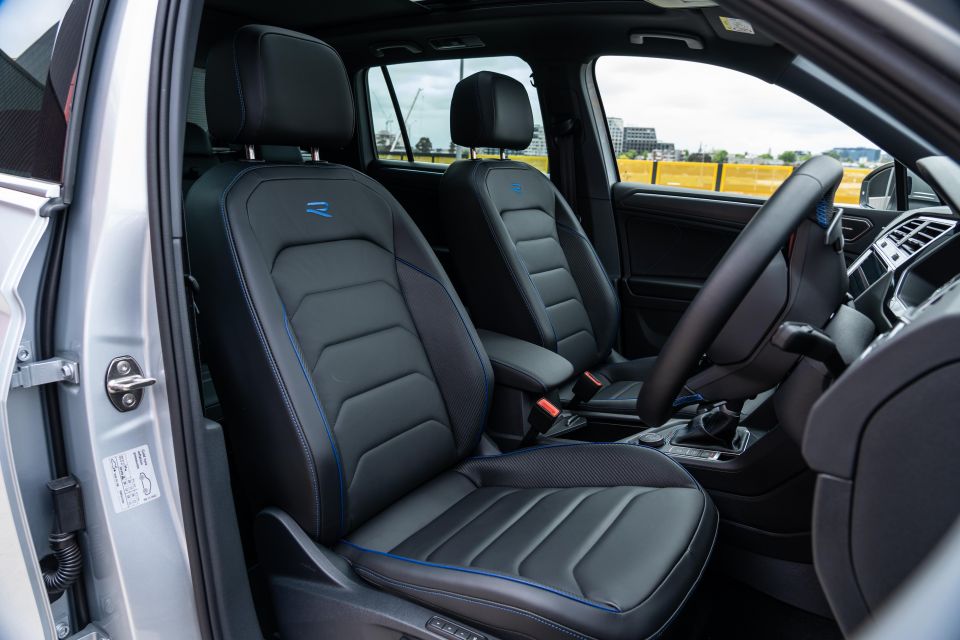

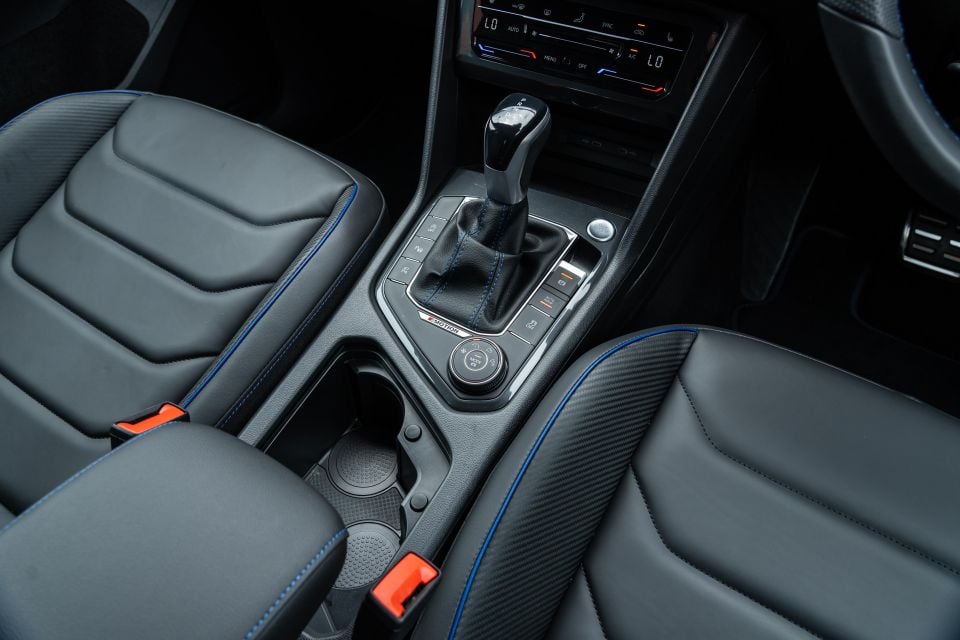
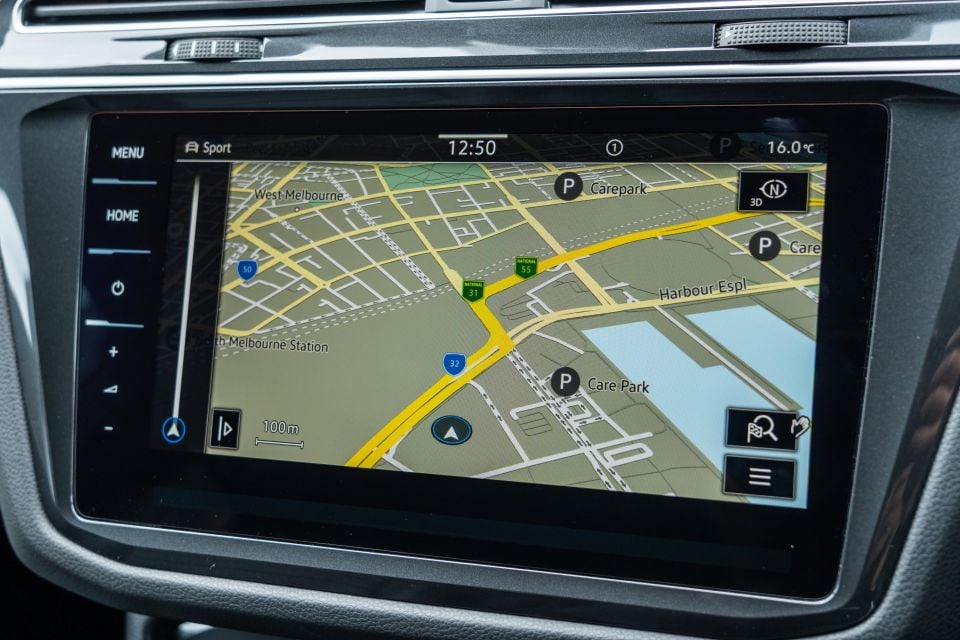
Display tech is pretty standard fare for MQB-based Volkswagens, comprising a 10.25-inch Digital Cockpit virtual instrument cluster joined by a 9.2-inch touchscreen navigation system, both running the MIB3 generation of VW’s software interface.
While not quite as pretty or configurable as Audi’s benchmark virtual cockpit units, the Tiguan’s Digital Cockpit offers a good variety of layouts and menus, while offering crisp clarity and fluid animations. It’s a shame it’s gotten smaller in recent years, as a 12.3-inch unit would better fill the space.
The central touchscreen; meanwhile, will be familiar to anyone that has had a high-spec Golf Mk7 or Passat, but running a newer interface that also facilitates wireless Apple CarPlay and Android Auto. There’s also DAB+ digital radio finally.
While not quite as flashy as some of the newer VW Group infotainment systems – which come with their own quirks, truth be told – the older unit offers good response times, nice graphics, and user-friendly menus. Annoyingly; however, the touch-capacitive shortcuts for volume and power are on the left-hand drive side.
There’s also a little flip-up head-up display which is a handy inclusion but not a benchmark feature of its type. The polariser is a little small and doesn’t work well for some of my taller colleagues. It also doesn’t allow as much adjustment for angle of text like some other systems, and the graphics are very basic.
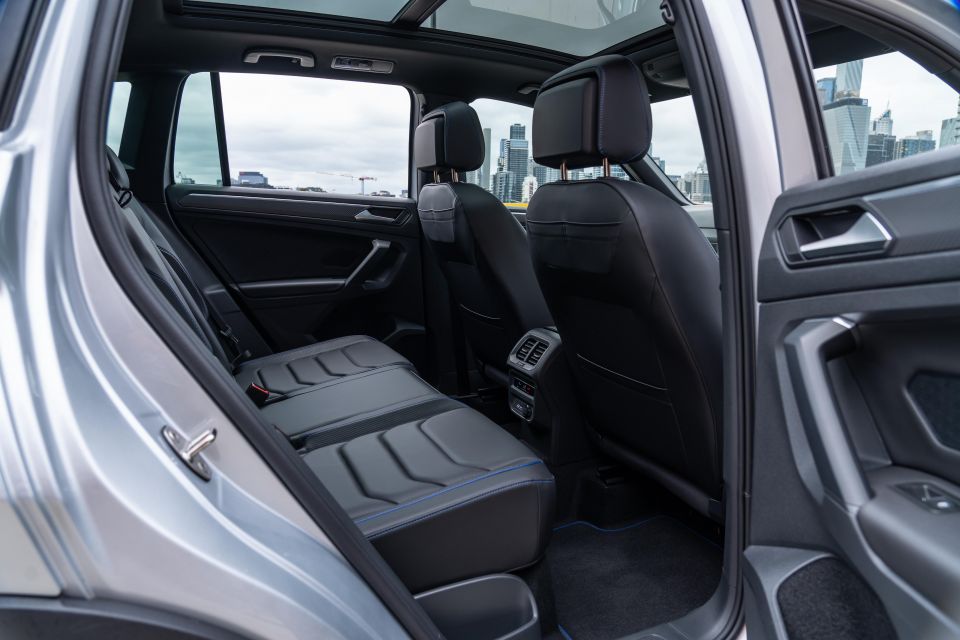
Storage is another highlight. The current Tiguan is smartly packaged with an array of big nooks and crannies to store your things, door pockets capable of taking a Frank Green drink bottle, and a modular centre console as well as a phone-sized shelf under the centre stack. In fact there should be a place for everything!
If the practicality up front impresses, no doubt parents and regular people haulers alike will be impressed by the space on offer in the rear. The Tiguan’s boxy dimensions and clever packaging means even taller than average adults can sit behind full-grown drivers, and the rear bench slides and reclines for added comfort and adjustability.
Amenities include a third zone of climate control with directional vents behind the centre console, map pockets, a fold-down centre armrest with cupholders, and large bottle holders in the doors.
The rear seats aren’t heated, but you do get ISOFIX anchors on the outer positions and top-tether points across all three seat backs. The centre back seat also can fold independently to stow longer items without interrupting the outer passengers.
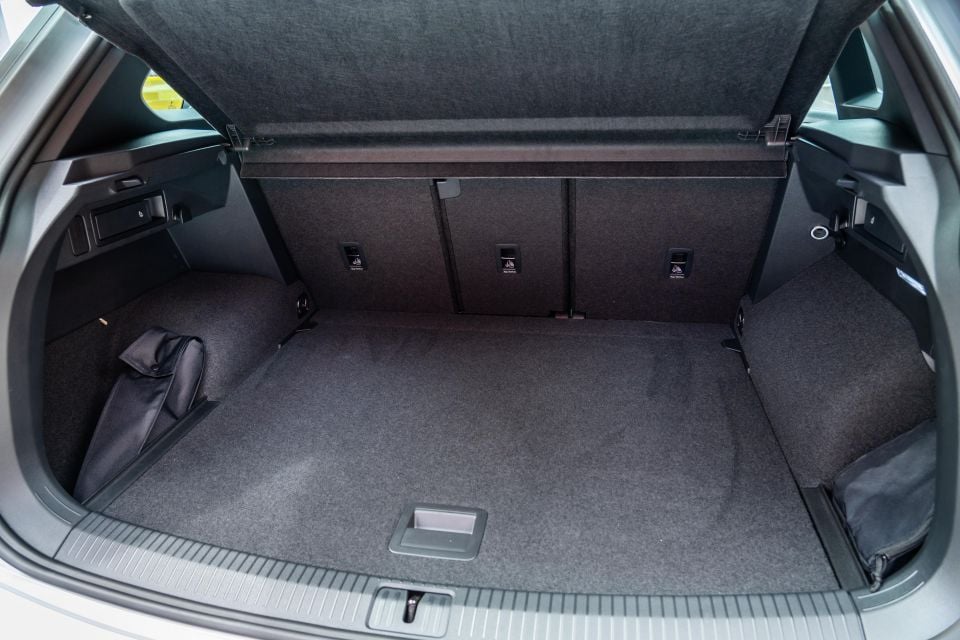
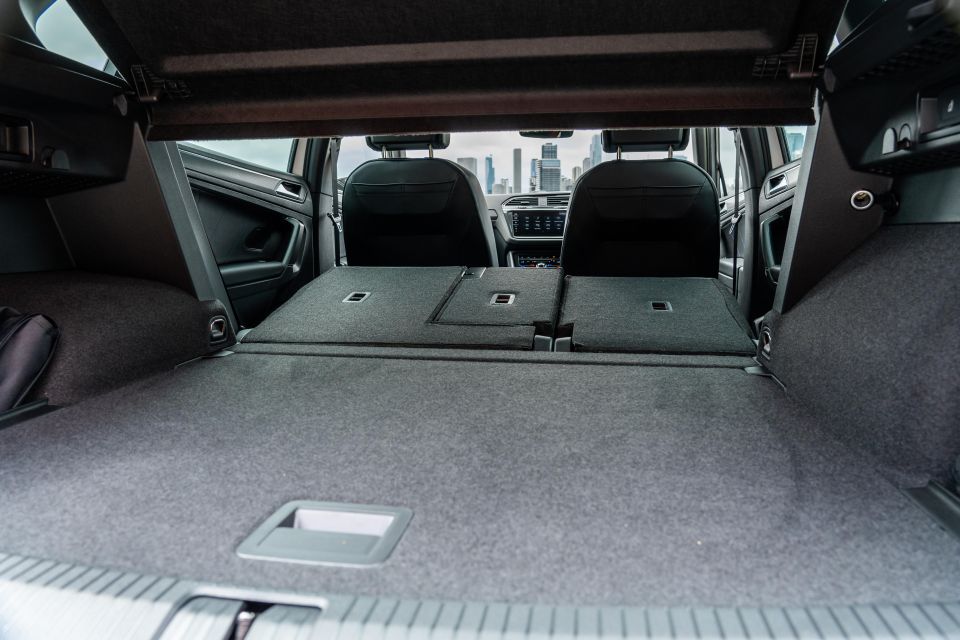
The Tiguan R retains the practical luggage area of the core range, quoting 615L with the rear seats upright in their forward-most position, expanding to 1655L with the rear seats folded.
Unlike other models in the range; however, there’s no spare wheel of any kind – rather a tyre mobility kit.
It’s a familiar VW R tale under the bonnet, with the tried and tested EA888 2.0 TSI turbo petrol engine powering the go-fast SUV.
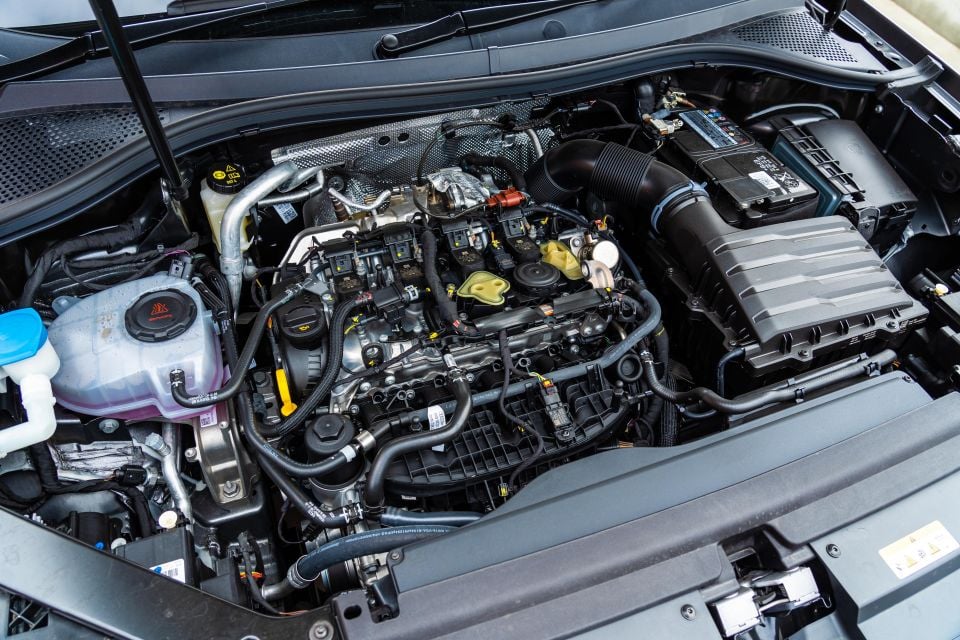
For the Australian-spec Tiguan R, the 2.0-litre turbocharged four-cylinder unit makes 235kW of power (5600-6500rpm) and 400Nm of torque (2000-5600rpm), with drive sent to all four wheels via a seven-speed wet-type DSG dual-clutch automatic.
Local versions of the Tiguan R don’t get the full-fat 420Nm tune of the Tiguan R due to our market receiving a version of the drivetrain that doesn’t feature a petrol particulate filter (PPF) like in Europe. It’s a similar story for the Golf R Hatch.
VW quotes a 5.1-second sprint from 0 to 100km/h, which is 0.2s off the pace of its PPF-equipped European equivalent. Give it enough unrestricted road, and you’ll hit 250km/h flat out according to global specs.
Still, it bests the BMW X1 M35i (5.4s) and is line-ball with the Mercedes-AMG GLA 35 4Matic (5.2s). Both of these vehicles are more than $90,000 plus on-road costs. Meanwhile, the fire-breathing Audi RSQ3 dashes to triple figures in 4.5s with its more powerful five-cylinder turbo donk.
Fuel consumption is rated at 8.8 litres per 100km on the combined cycle, with CO2 emissions of 201g/km. The Tiguan R requires 98 RON premium unleaded for its 58-litre tank.
As you’d expect, it’s like a big Golf R that’s been raised slightly.
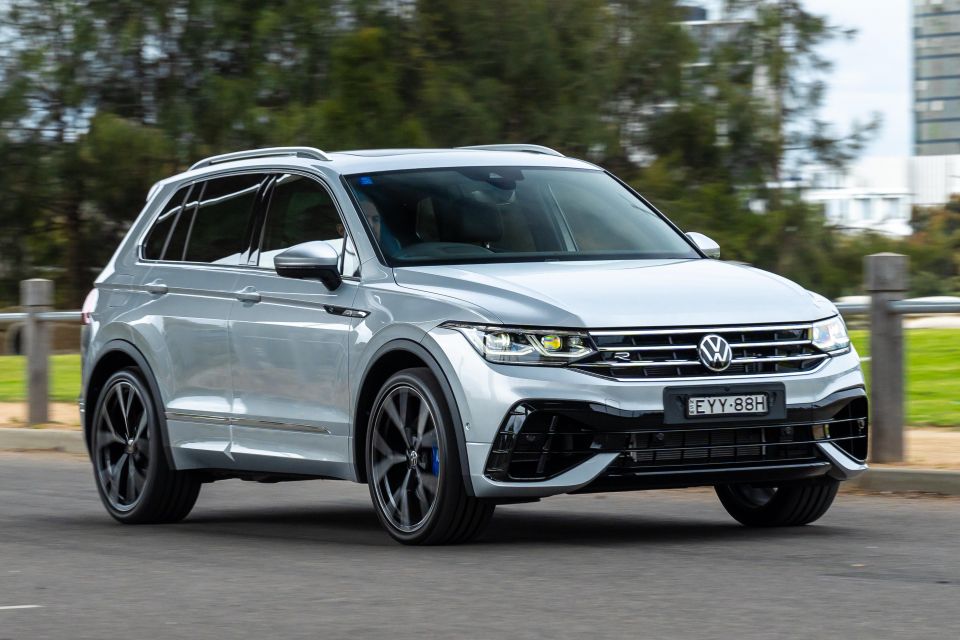
There’s no escaping the Tiguan’s taller body and raised ride height – as well as the commanding drive position – but there’s a surprising level of talent on offer for keener drivers that have managed to get the Tiguan R over the line with their pragmatic spouse over say, a Golf R or a sports coupe.
It fires up with the same muted burble as the Golf R – and a litany of other VW R and GTI products with the same engine – and you can drive this about in daily scenarios much like a Tiguan R-Line. That’s generally the beauty of Volkswagen’s performance products; that Jekyll and Hyde split personality.
Pop it in Comfort mode and it feels like any other Tiguan with sportier trimmings, save for a slightly sharper ride and more road noise from those massive 21-inch wheels and 255/35 performance tyres. The adaptive dampers are properly comfortable in Comfort, and noticeably firm things up in Sport and Race.
You’re also able to tailor the Tiguan R to your tastes with the available Individual mode. This allows you to choose from various settings for throttle response, engine sound, damping, and even things like adaptive cruise control response as well as air conditioning: it’s pretty swish.
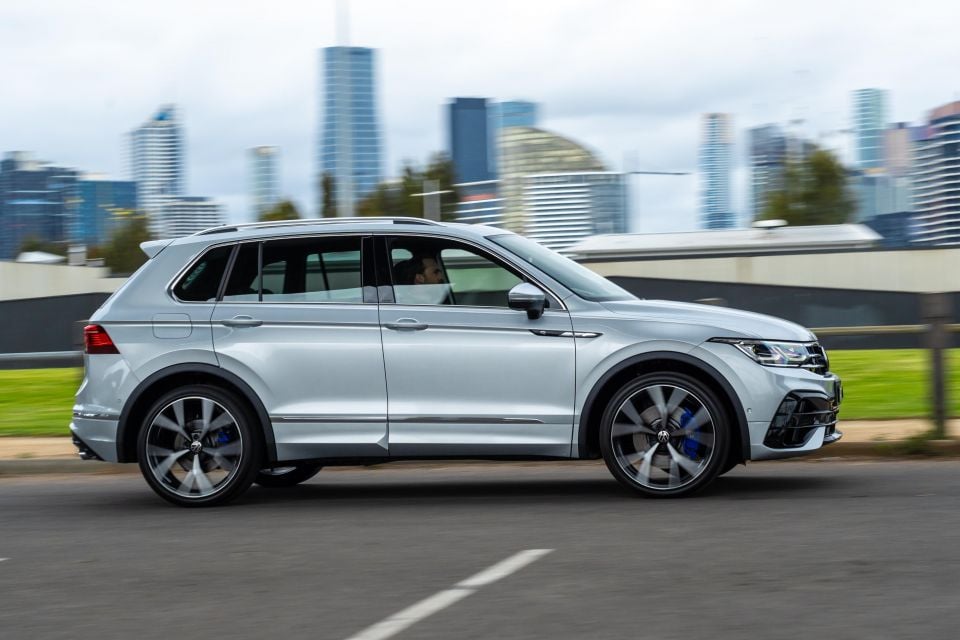
While most owners are probably driving these to and from the school run or getting groceries (let’s be real, it’s true), the main reason you’d pick the Tiguan R over the 162TSI R-Line is because of the extra performance on offer.
I took this for a spirited run up through the hills to Kinglake in Victoria’s north east, and I couldn’t believe how capable the Tiguan R is when driven in anger. Despite its size and 1.7t (kerb) heft, there’s heaps of grip and minimal body roll, even through tight corners, giving you the confidence to really push this thing up a B-road.
The steering is also communicative; though, when it ‘weighs up’ in its sportier modes the feedback can feel a touch artificial. That said, you still get a good idea of what the front wheels are doing and that front axle responds to inputs nicely.
You get snappy shifts when left in D or S settings too, and the paddle shifters respond as you’d expect. VW doesn’t offer the Akrapovic titanium sports exhaust in Australia for the Tiguan R, but you still get some pops and cracks on upshifts and overrun that no doubt will make you smile.
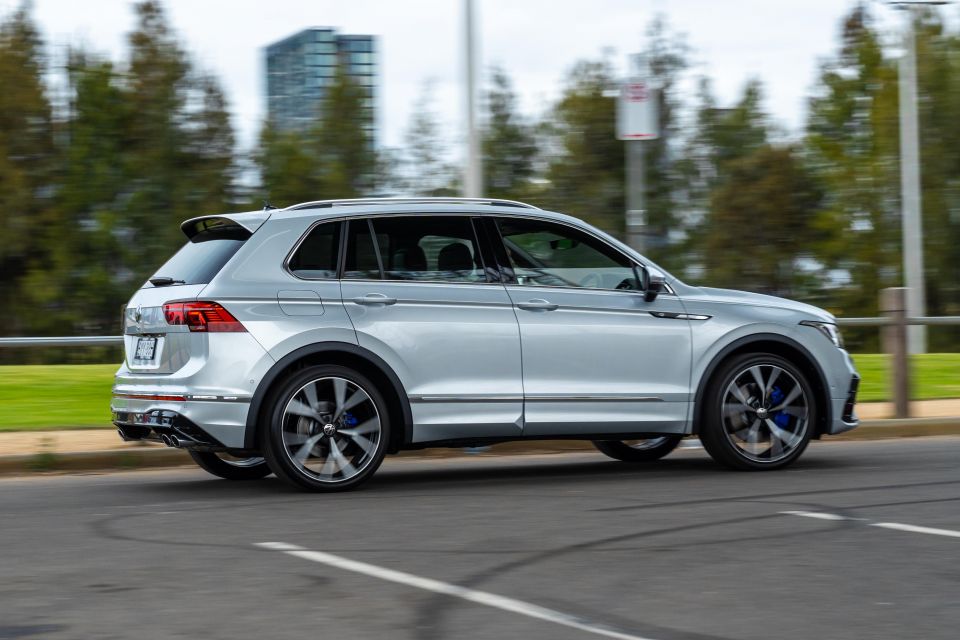
If I had one complaint it’s that the driver’s seat doesn’t go low enough, as you feel you’re perched a little high in the cabin when driving hard and it can exacerbate that feeling of lean even though the car is nigh on flat through corners.
Being a top-spec Volkswagen, the Tiguan R is decked out with just about every active safety and assistance feature VW currently offers, meaning it’s easy to drive day to day, fun to drive out of town, and also relaxing to cruise in on the highway.
As we’ve previously reported, VW’s Travel Assist semi-autonomous highway mode is one of the best in the business, with accurate and intuitive adaptive cruise control and lane centring functions that take the load off longer stints.
You also get blind-spot monitoring and rear cross-traffic alert to better manage merging into traffic and reversing out of tight spaces, aided by a surround-view camera system and parking sensors all round. No excuses for scraped wheels.


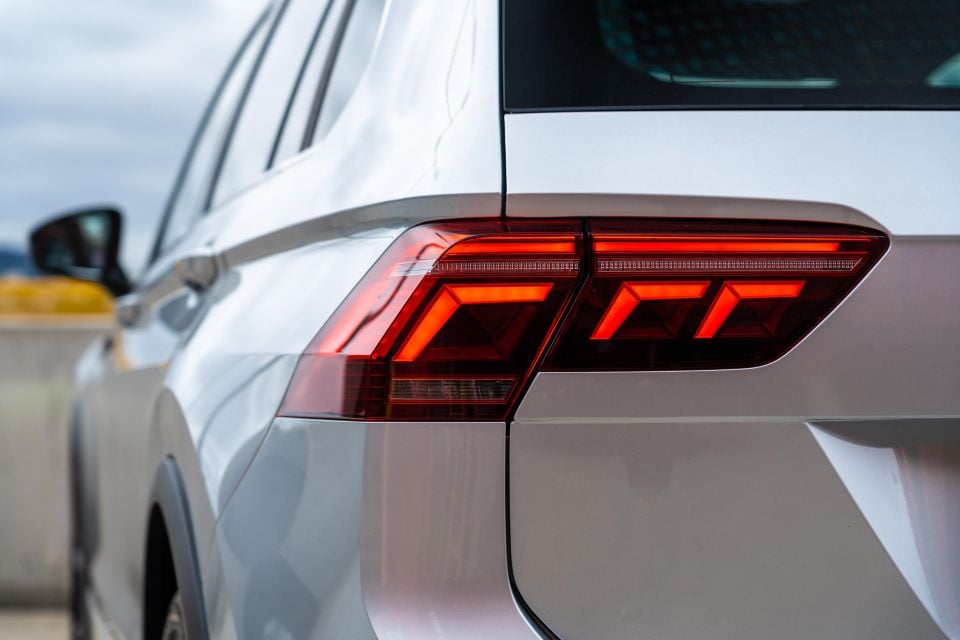

Tiguan R highlights:
Features carried over from other grades include:
The Volkswagen Tiguan wears a five-star ANCAP rating based on tests carried out on the pre-facelift model in 2016; however, this rating has now expired.
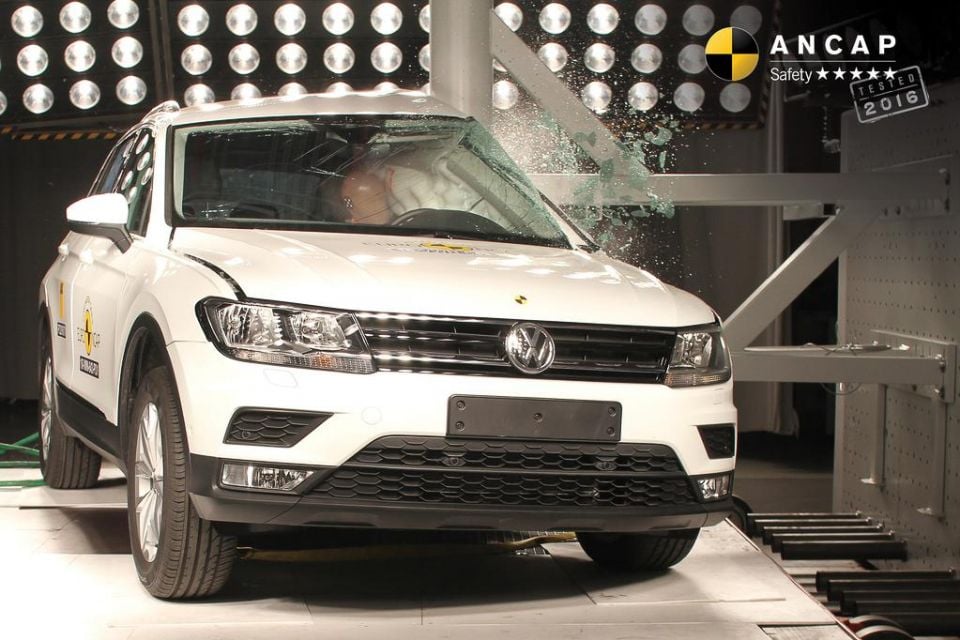
The Tiguan scored 96 per cent for adult occupant protection, 80 per cent for child occupant protection, 68 per cent for vulnerable road user protection, and 68 per cent for safety assist.
Standard safety equipment includes:
Volkswagen covers its range with a five-year, unlimited-kilometre warranty.
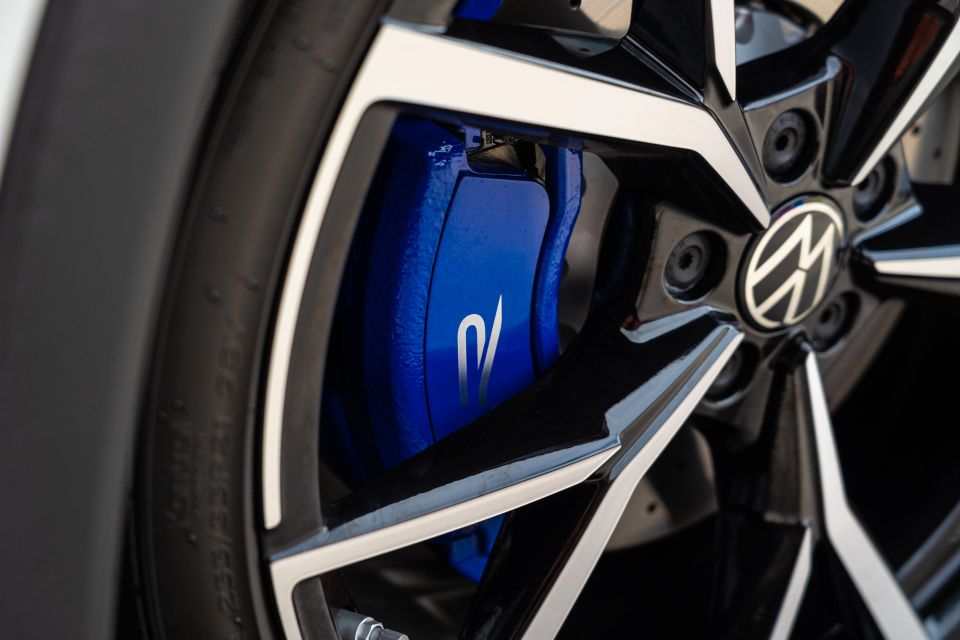
Find out more about the car
You get 12 months of roadside assistance with purchase, with up to 10 years available renewed with a service at a Volkswagen dealer.
Scheduled maintenance is required every 12 months or 15,000 kilometres – whichever comes first. VW offers three- and five-year Care Plans, which cover scheduled maintenance at a reduced cost compared to paying as you go.
For the Tiguan R, the three-year Care Plan costs $1700, while the five-year plan is $3200.
As for fuel consumption, I saw an indicated return of 10.8L/100km after some daily commuting in high-traffic conditions, a spirited run through the hills and then a longer freeway stint.
Not quite what Volkswagen claims, but that’s to be expected if you’re liberal with the loud pedal.
It won’t take you long to see why so many Australian’s find the hot Tiguan so R-mazing.
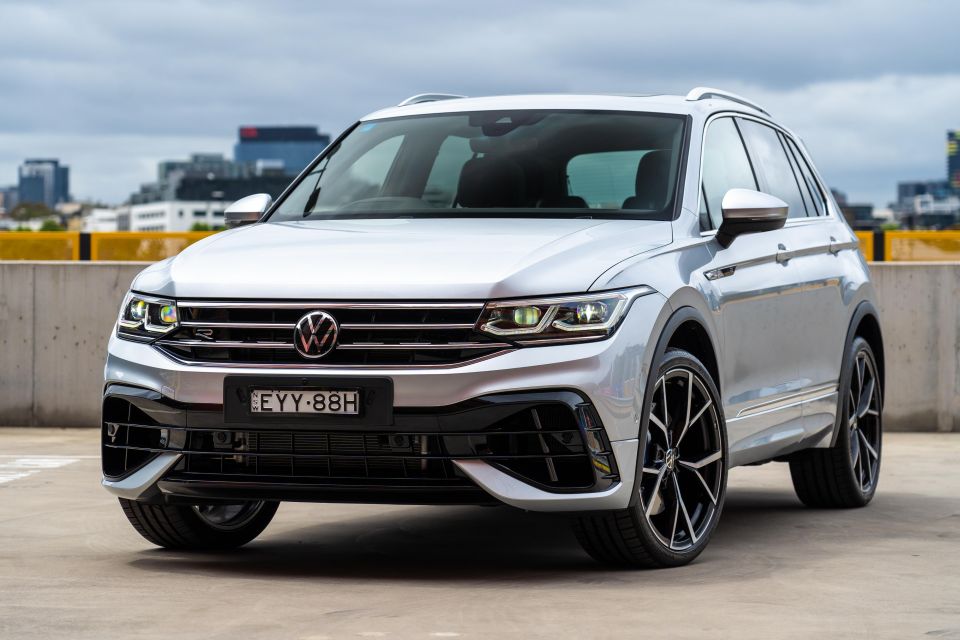
Even compared to the now-defunct Golf R Wagon, the Tiguan offers more space for people and stuff, whilst also featuring the more in-fashion body style that has been proven to find favour with local buyers.
Australian vehicles come decked out with luxury levels of features and tech, as well as performance and handling capabilities that can keep some sports cars honest. If anything, the fact it’ll surprise you with how good it is compared to something like a Golf R may have you smiling even more, because it almost feels like it shouldn’t be this good.
That’s not to say it’s perfect, though. Some may find its looks a little too regular – especially without the Lapiz Blue hero paint – and some of the cool options like bucket seats and an Akrapovic titanium sports exhaust remain off the cards for Australia.
We also lament the fact that due to our low grade fuel Australia misses out on the full-fat Euro tune, which not only adds more torque on paper but also means our Tiguan R is slower than the one Europe and the UK gets. This is about performance, after all.
But it’s otherwise hard to knock what is an excellent all-rounder. It really is the new Golf R Wagon for the SUV age. Even better, there’s nothing you can get from rival Euro makes for similar money, which makes the deal even sweeter.
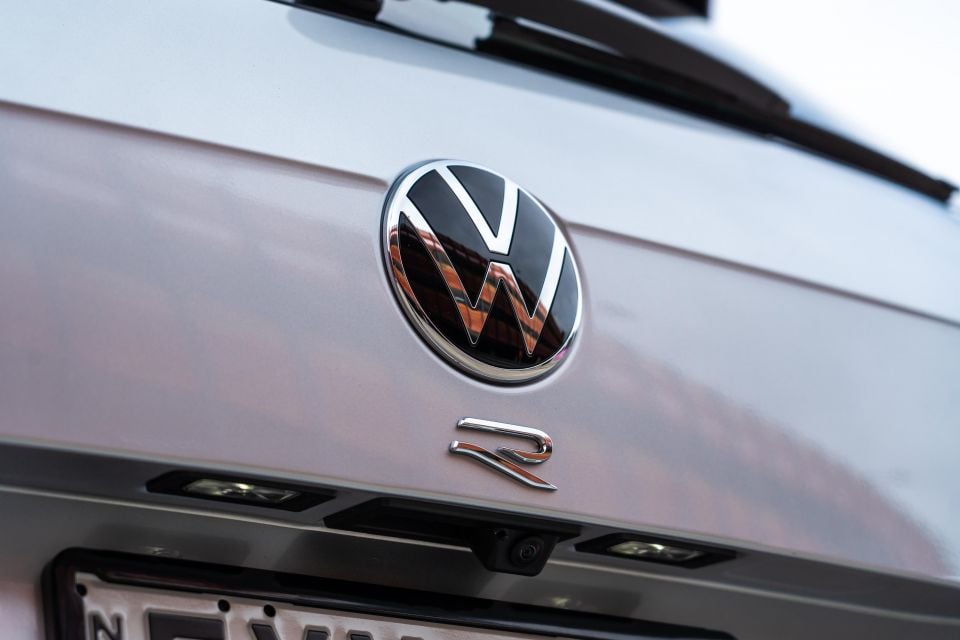
Click the images for the full gallery
BUY: Volkswagen Tiguan MORE: Everything Volkswagen Tiguan
Take advantage of Australia's BIGGEST new car website to find a great deal on a Volkswagen Tiguan.
Discover and compare similar models
James is an automotive journalist based in Melbourne, Australia. Before joining CarExpert.com.au in 2020, James has worked at leading auto media outlets including Carsales and CarAdvice, as well as at Pulse agency for Ford Australia's communications team. In 2019 James made Mumbrella's 'Top 20 most prolific web authors in Australia' list after publishing 1,360 articles between March 1, 2018 and February 28, 2019 for CarAdvice. James is also an Ambassador for Drive Against Depression – an Australian charity whose mission is to support mental wellness through the freedom of driving and a shared love of cars.


James Wong
5 Days Ago
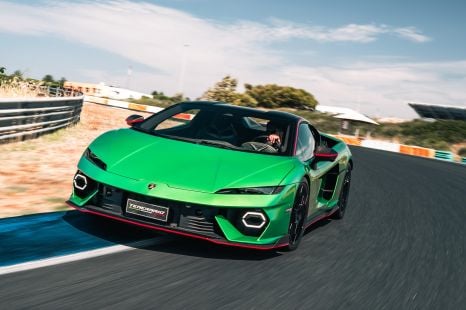

Alborz Fallah
4 Days Ago


Andrew Maclean
3 Days Ago
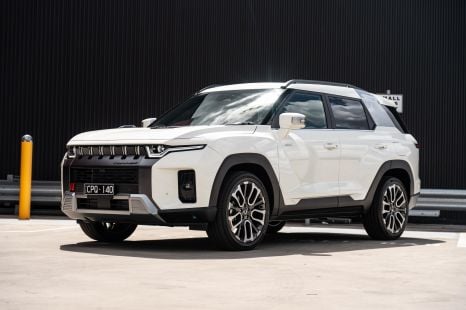

Max Davies
3 Days Ago


Matt Campbell
2 Days Ago
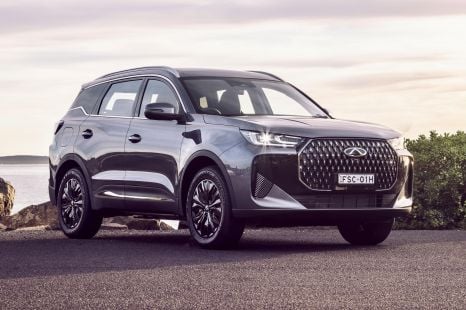

Max Davies
20 Hours Ago